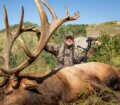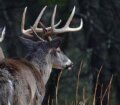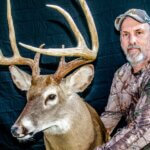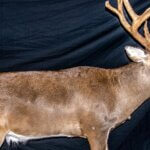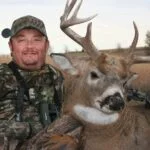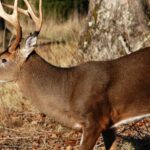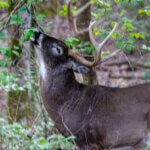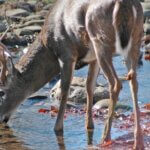Editor’s Note: Michael Perry of Vinemont, Alabama, a longtime, successful public-land deer hunter who’s taken more than 79 bucks on public lands through the years, with 38 of them being 8-pointers or better, explains, “My trail cameras are an integral part of my scouting program.” But Perry doesn’t use trail cameras like most deer hunters do. He’s only taken four bucks that he’s seen previously on trail camera pictures before he’s taken them. Perry says, “Most of these bucks I’ve taken, especially the most mature bucks, I’ve never seen before I’ve released my arrow or squeezed my trigger. However, my trail cameras have told me the trails are where those mature bucks are most likely to be.”
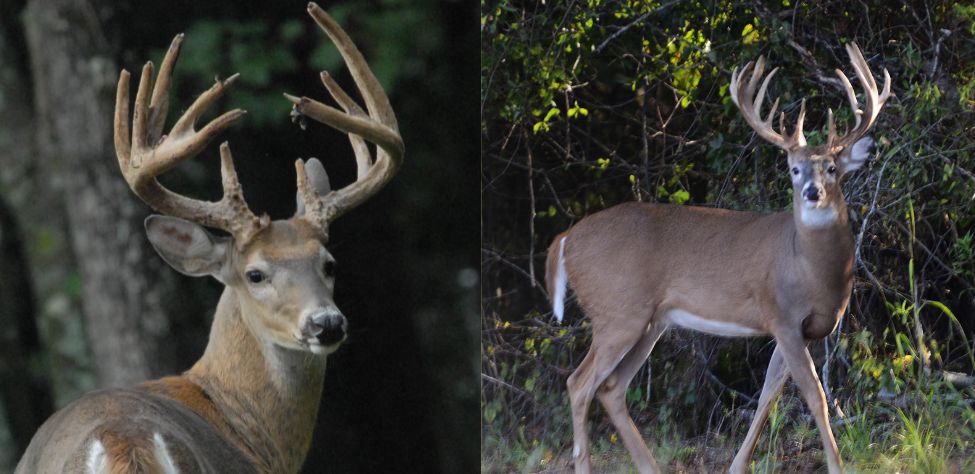
My first trail cameras used film. Those cameras could only take 36 pictures, and if a bug or any other object got on the lens or passed in front of the lens, the camera might take an entire roll of film of that image. Those cameras were so aggravating that I only used them a few times. Then, when digital trail cameras came onto the hunting scene, I experimented with them and learned so much.
Historically, trail cameras were used in the 1800s by wildlife photographers who set trip wires. Then, in the 1950s, wildlife photographers shot 35mm cameras. In the 1980s and 1990s, motion detection was added to those 35 mm cameras. Digital trail cameras first came to be used in the late 1990s. Today, the two types of digital trail cameras most often used are those that shoot pictures and then store them on flashcards and those that shoot photos and send them to your cell phone. The element holding back the wireless technology of digital trail cameras is the network providers themselves. If your cell phone can’t get a signal where you’re thinking about putting your digital trail camera, the camera can’t send photos to your cell phone.
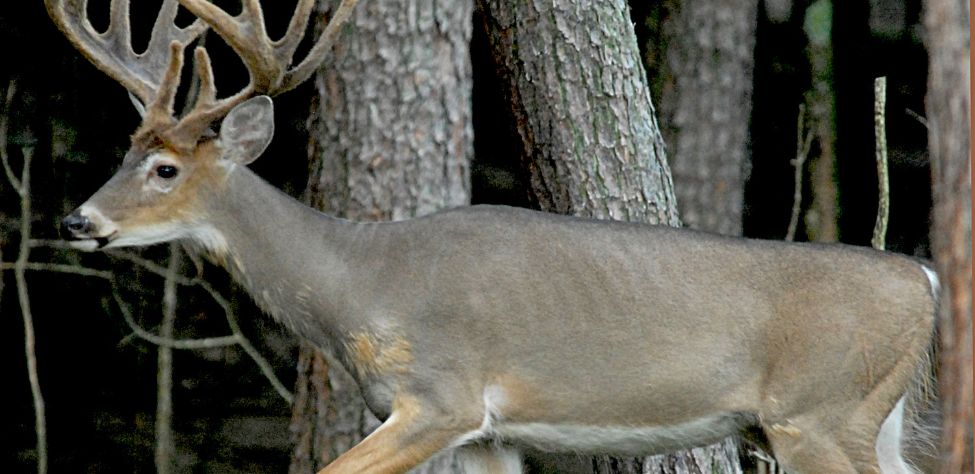
Smaller trail cameras with bigger capacity storage, super-fast trigger times, and higher megapixels in the camera’s sensors available today all make hunters love using trail cameras. Then, around 2016, companies began making trail-camera batteries with longer lives. The resolution of the pictures was so much better that I started using trail cameras much more often.
Looking for more content? Check out our YouTube channel and watch “Bob Sheppard’s Favorite Tree Stand” by John E. Phillips.
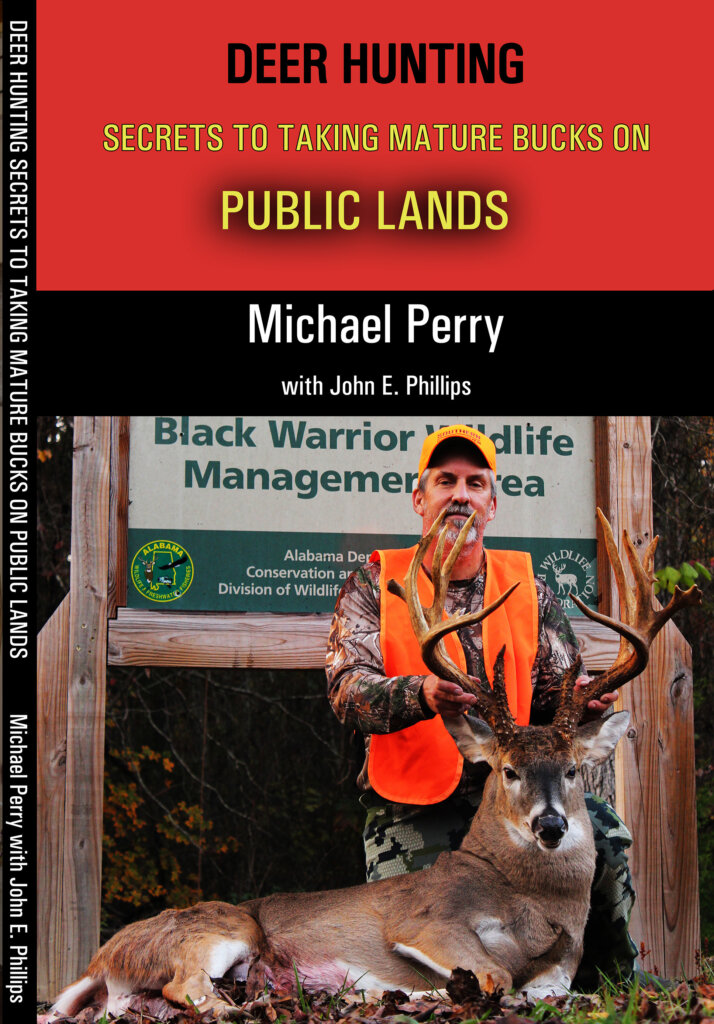

How to Hunt and Take Big Buck Deer on Small Properties
In this book, you’ll hear from 14 hunters who either have gained permission or leased properties as small as six acres to as much as 250 acres, and how they consistently take older-age-class bucks off these little lands.
VERSIONS: AUDIBLE, KINDLE & PRINT

Jim Crumley’s Secrets of Bowhunting Deer
Using a black magic marker and a gray work jumpsuit, Jim Crumley of Buchanan, Virginia, drastically changed the nature and purpose of hunting camouflage when he created the first sportsman’s camouflage – Trebark. Crumley’s love of bowhunting and his desire to be more invisible changed hunting clothing forever.
In this hunting guide, he shares the wisdom that he’s learned throughout his lifetime about how to be a hunter, how to find a deer lease, how to scout for deer, and more.
Special features include how to:
- Have a magic 60 acres to hunt
- Decide the best equipment to use
- Find deer year-round
- Locate land to hunt
- Know the best place to put your tree stand
- Get bucks within bow range
VERSIONS: AUDIBLE, KINDLE & PRINT

How to Hunt Deer Like a Pro
How do you know if the land you hunt has a trophy deer on it? Wildlife manager Bob Zaiglin, of Uvalde, Texas and Jim Crumley, the father of modern-day hunting camouflage, tells you how to find out. GPS can make finding and taking that trophy buck easier. This hunting guide will teach you how to hunt big bucks where no one else can find them, how to call deer, and how to become versatile as a deer hunter, so that if one deer tactic doesn’t work, another one will.
In the chapter, “How to find Bucks at Scrape,” Dr. Keith Causey, retired professor of Wildlife Science at Auburn University, describes the best way to hunt a scrape.
Brad Harrison of Neosho, Missouri, is a nationally-known videographer, professional deer hunter and master at calling deer. Another master is Will Primos of Primos Game Calls. These two experts will tell the best deer calls and when to use them in this book.
And for over 20 years, Bo Pitman, lodge manager of White Oak Plantation, has been studying deer movement patterns. He explains what types of conditions are best for predicting deer movement.
VERSIONS: AUDIBLE, KINDLE & PRINT

Deer hunting and deer hunters are drastically changing each year. To learn new techniques for hunting deer and have more places to hunt, I’ve interviewed some of the best deer hunters in the nation and share their tactics in How to Hunt Deer Like a Pro: Volume II.
In Chapter 10, Jacob Lamar tells you his tactics for consistently taking older-age-class bucks on public lands in several states. Chapter 11, Bob Walker explains how to find places on public lands where you can hunt that 99 percent of the other hunters never have considered hunting. The Bonus Chapter with David Ramey tells you how, where, when and with what equipment to take big Kansas bucks on public lands by hunting in 100-degree weather when others won’t hunt.
Chapter 13, Mark Drury, his family and his guests take mature bucks every season by having more small places to hunt rather than one large property. Drury explains the strategy of having satellite farms to hunt that only may be 50-150 acres each or less. Chapter 15, Pat Reeve, who hunts far-northern states and Canada, says, “I don’t like hunting for mature bucks until the weather is 20 degrees or less.” Chapter 4, Dr. Larry Marchinton says that funnels are the most-reliable stand sites to hunt for big bucks and tells why.
VERSIONS: AUDIBLE & PRINT
Tomorrow: How to Use Cameras for Public Deer

